
What Does Green Mean in a Dream?
Green, the color of life, renewal, and balance, holds a special place in our collective psyche. From the lush foliage of forests to the emerald hues of a calm sea, green hues speak to something deep within us – a primal longing for connection, peace, and vitality.
Green in dreams often symbolizes growth, renewal, and emotional balance. It is a color deeply tied to the natural world, representing harmony, fertility, and the cyclical nature of life. When green appears in dreams, it may indicate a period of personal development, healing, or a return to a more authentic, unencumbered state of being.
From a Jungian perspective, green can signify the Self in its wholeness, an integration of opposing forces leading to psychological equilibrium. It is the color of the heart chakra, suggesting emotional openness, love, and connection. In dream symbolism, green may appear in the form of verdant landscapes, lush forests, or emerald-hued waters, each representing a different facet of emotional and psychological flourishing.
However, green may also carry shadow aspects. In some contexts, it can indicate envy, stagnation, or an over-reliance on comfort zones that prevent necessary growth. A sickly or artificial green may warn of imbalance, toxicity, or an avoidance of deeper emotional truths.
The Meaning of Green in Dreams
In dreams, green symbolizes growth, healing, and renewal. It often appears when the dreamer is undergoing emotional or psychological transformation, indicating a need to embrace change with trust and openness. Green reflects a state of inner alignment, suggesting that the dreamer is either moving toward or in need of emotional equilibrium.
If green appears in the form of plants, trees, or natural landscapes, it may signify fertility, abundance, and the steady unfolding of personal development. A lush green environment often indicates well-being, while decayed or muted green may suggest stagnation or unresolved emotions. Green water, depending on its clarity, can symbolize healing emotions or emotional uncertainty, urging the dreamer to examine their feelings with greater depth.
In Jungian terms, green can be linked to the archetype of the Great Mother, representing nurturing, protection, and the cycles of life and death. It may also reflect the individuation process, as it encourages movement toward wholeness and integration. If green appears in a dream alongside other strong colors, it may indicate the need to balance different aspects of the self—such as logic and intuition, action and receptivity, or independence and connection.
While green is generally a positive color in dreams, excessive green or dull, sickly shades may point to complacency, indecision, or emotional repression. In this case, the dream may be prompting the individual to break out of comfort zones and engage with life more actively. Ultimately, green in dreams is a call to embrace growth, trust in renewal, and find harmony between movement and stillness.
Somatic Associations with Green
Green is closely connected to the heart, breath, and nervous system regulation. Somatically, it is often felt in the chest and lungs, aligning with the heart chakra, which governs connection, compassion, and emotional balance. It is a color of renewal and equilibrium, helping the body shift from states of stress into harmony. Green fosters a sense of openness and calm, making it deeply associated with healing and the body’s capacity for self-restoration.
Physiologically, green is linked to the autonomic nervous system’s ability to regulate between activation and rest. It encourages deep breathing, balanced heart rate, and overall homeostasis. Unlike red, which activates, and blue, which soothes, green harmonizes—it promotes movement and flow without overstimulation or withdrawal. In somatic therapy, green can symbolize a state of being both present and receptive, fostering resilience and emotional flexibility.
Trauma can often create constriction in the chest, limiting breath and reducing the body’s sense of safety. Green represents the release of that constriction, allowing for greater ease and an expanded sense of self. When experienced in balance, green provides a felt sense of connection—to others, to nature, and to the body itself. However, an overabundance of green may signal indecision, passivity, or difficulty taking action, as it can sometimes emphasize balance at the expense of movement.
The Neuroscience of Green
Scientists have long been fascinated by the effects of color on the brain and body. But recent advances in neuroimaging and physiological monitoring are revealing just how profound and far-reaching these effects can be, especially when it comes to green light.
At the most basic level, green light is processed by specialized photoreceptors in the retina called intrinsically photosensitive retinal ganglion cells (ipRGCs). These cells are particularly sensitive to wavelengths in the blue-green spectrum, around 490-520 nanometers. When stimulated by green light, the ipRGCs send direct projections to a number of key brain regions involved in regulating arousal, mood, and circadian rhythms.
One of the primary targets of these ipRGC signals is the hypothalamus, a small but mighty structure deep in the brain that acts as a central control hub for many of our basic drives and instincts. The hypothalamus plays a crucial role in regulating things like hunger, thirst, sleep, sex drive, and emotional responses – all the primal needs and urges that keep us alive and connected.
Green Light and the Oxytocinergic System
Research has shown that exposure to green light has a particularly potent effect on one specific region of the hypothalamus called the paraventricular nucleus (PVN). The PVN is a major site for the synthesis and secretion of two neuropeptides that are absolutely essential for social bonding and nurturing behaviors: oxytocin and vasopressin.
Oxytocin, often called the “love hormone”, is released during experiences of caring touch, orgasm, childbirth and breastfeeding. It promotes feelings of trust, attachment, and emotional attunement. Vasopressin works in tandem with oxytocin to modulate pair-bonding, social recognition and defensive aggression. Together, these ancient peptides form the core of the oxytocinergic system – the neural circuitry that allows us to form and maintain intimate relationships.
Amazingly, several qeeg and fMRI studies have found that just being exposed to green light can significantly increase activity in the PVN and trigger the release of oxytocin and vasopressin (Vandewalle et al., 2010). In other words, simply being in the presence of green hues seems to shift the brain into a more affiliative, prosocial state. It’s like a neural love potion!
So how might this work experientially? Imagine gazing at a lush green landscape – a dense forest, a rolling meadow, a painting in soothing olive tones. As the green light hits your eyes, it sends a cascade of signals to your PVN, which begins pumping out oxytocin and vasopressin. Suddenly, you find yourself breathing more deeply, relaxing into a state of mellow contentment. The edges of your consciousness seem to soften, making you more open to connection with your surroundings. Your heart swells with appreciation; you feel more generous, more forgiving. In this neurochemical afterglow, the boundaries between self and other seem more permeable. Connecting feels easy, natural, safe.
The Calming Embrace of Green
In addition to its effects on bonding and sociality, green light also seems to have a powerful calming and balancing effect on the autonomic nervous system – the intricate web of nerves that unconsciously regulates many of our bodily functions like heart rate, breathing, digestion and sexual arousal.
Research has shown that exposure to green light stimulates the parasympathetic branch of the autonomic nervous system, which acts like a brake on the body’s stress responses. The parasympathetic system is orchestrated by the vagus nerve – a massive, wandering nerve that emerges from the brainstem and innervates many of our major internal organs.
When the vagus nerve is toned and active, it puts the body into a regenerative “rest and digest” state characterized by slower breathing, reduced heart rate, increased intestinal motility and a general sense of relaxation and well-being. Vagal activity is also closely linked to our capacity for emotional regulation, resilience in the face of stress, and ability to engage socially.
Several studies using non-invasive measures of vagal tone like heart rate variability (HRV) have found that just a few minutes of green light exposure can significantly increase parasympathetic activity (Grote et al., 2013). Subjectively, this might feel like a gentle unclenching, a softening of tension and vigilance. Colors may appear more vivid, sounds more resonant. There’s a sense of coming home to the body, of safe harbor after a storm.
This soothing, vagal-enhancing effect of green light may have significant therapeutic implications. For people struggling with anxiety, trauma, or chronic stress, green-tinted environments or targeted green light therapy could help entrain the nervous system towards calmer, more ventral states. Skillfully integrated with somatic approaches like sensorimotor psychotherapy or EMDR, green light could be a powerful adjunct for trauma healing and resolution.
In Rhythm with Green
At an even deeper level, green light seems to shift global brain rhythms in ways that promote emotional balance, integration, and a relaxed-yet-alert state of consciousness. Specifically, several EEG studies have found that green light significantly increases alpha wave activity in the posterior regions of the brain (Rea et al., 2010).
Alpha waves are slow, synchronous oscillations in the 8-12 Hz range that are associated with states of relaxed, receptive awareness. Alpha is like a bridge state between the conscious and unconscious minds, allowing us to access intuitive, creative and symbolic modes of thinking. Subjectively, alpha feels like a calm, clear presence – the “flow” state of effortless concentration reported by artists, athletes and meditators.
Interestingly, alpha waves are also closely tied to the visual system and seem to play a key role in regulating the flow of sensory information. Some researchers believe that alpha acts like a “searchlight” that rhythmically samples the environment, helping us select and process relevant stimuli while filtering out noise and distraction. In this way, alpha may support a state of relaxed, panoramic awareness in which we can more easily attune to subtle signals and patterns.
Green light’s alpha-enhancing effects suggest that it may be a useful tool for practices that aim to cultivate mindful presence, emotional equilibrium and flexible attention. Meditating under green light, for example, could help practitioners drop into absorptive states more easily and maintain a relaxed focus. For people with attentional challenges or hypervigilance, green-tinted lenses or ambient lighting might take the edge off overstimulating environments and promote a greater sense of ease and flow.
At a more metaphorical level, the alpha state evoked by green light can be seen as the “fertile void” of creative incubation – the womb-like space of dreaming, imagining and emotional processing that gives birth to new insights and growth. In therapeutic contexts, bathing the room in a soft green glow during hypnosis, guided imagery or expressive arts could help clients access this liminal state and bring forth fresh perspectives and possibilities.
The Mythology and Symbolism of Green
Of course, green’s power goes far beyond its immediate neurophysiological effects. In the realm of myth, religion and archetypes, green is a profoundly evocative and multi-layered symbol with roots that reach deep into the collective unconscious. Across cultures and throughout history, green has been associated with some of the most essential qualities in the human experience: life, nature, fertility, rebirth, healing, hope, and the heart.
Green, Giver of Life
At its most fundamental, green is the color of photosynthesis – the almost alchemical process by which plants transmute sunlight into the nutrients that sustain nearly all life on earth. In this sense, green literally is life, the verdant pigment that paints the living world into being.
Mythologically, this vitalizing power of green is often personified as a Great Mother Goddess – an ancient, fertile figure like Demeter, Isis, or Pachamama who births the cosmos and holds all of creation in her vast, green embrace. She is the pregnant womb of springtime, the emerald oasis in the desert, the regenerative force that brings light from darkness and life from death.
In many traditional cultures, green plants and herbs are used in rituals of blessing, purification and healing, as if to invoke this eternal vegetative power. The renewing energy of green is especially central in rites of passage and the agricultural cycle, where it marks the return of fecundity after the fallow winter and the promise of new growth after the harvest.
Psychologically, connecting with Green Mother energy can be profoundly nourishing and reparative, especially for those who have experienced early deprivation or insecure bonding. Spending time in green, natural settings, tending plants, or visualizing oneself held by a loving, earthy presence can help internalize a sense of abundance, groundedness and life-giving care. Ecotherapy approaches that emphasize immersion in and attunement to the rhythms of the natural world are especially effective at awakening this green healing potential.
Green Heart, Green Man
Beyond its maternal, fertile associations, green is also the color most universally linked to the human heart and the circulation of blood, sap and other vital fluids. In the Ayurvedic and Chinese medicine traditions, green corresponds to the heart chakra and the wood element, governing the upward, pulsing flow of energy that vivifies the body-mind.
Symbolically, green evokes the qualities we often associate with an open, healthy heart: compassion, empathy, freshness, and growth. A “green thumb” suggests a talent for nurturing life; a “greenhorn” is someone young, naive and tender. In the legends of King Arthur, the Green Knight represents the primal, untamed energies of the feeling body that the civilizing ego must confront and integrate.
This earthy, pagan image of the Green Man – a foliate head sprouting leaves and vines – appears in sculptures and paintings throughout medieval European churches, a kind of irrepressible vegetative spirit that assimilates and outlasts more arid patriarchal structures. His cyclical energy of death and renewal echoes the archetype of the dying and reborn vegetation god in myths like those of Osiris, Adonis and Dionysus.
Reconnecting with this Green Man energy can be an important part of psychospiritual healing and growth, especially for those alienated from the natural wisdom of the feeling body. Practices like authentic movement, expressive arts, and Jungian active imagination can help bridge the split between a rigid, heady ego and the polymorphous, pulsing life of the deep psyche as symbolized by the Green Man.
Green Muse, Green Faery
In addition to its links with the heart, green has long-standing associations with creativity, inspiration and the visionary imagination. In ancient Greece, the Muses were often depicted wearing green robes, and green gemstones like emeralds were thought to stimulate eloquence and artistic virtuosity.
Similarly, in Irish and Scottish folklore, green is the color of the faeries – liminal, otherworldly beings who inhabit a realm of enchantment and illusion just beyond the veil of ordinary perception. To enter the green-clad faery world is to step outside of linear time and pragmatic concern into a more fluid, dreamlike consciousness governed by feeling, fantasy and serendipitous association.
The link between green and altered or non-ordinary states of consciousness is reinforced by the traditional use of green psychoactive plants like absinthe, cannabis and peyote in various religious and creative subcultures. These “greening of the doors of perception”, as Huxley put it, offer a temporary respite from consensus reality and an immersion in more expansive, interconnected modes of being.
For therapists working with creative blocks, anhedonia or meaning crises, invoking green’s mythopoetic and psychedelic dimensions through guided imagery or expressive arts could help catalyze a transformative shift in perspective. Cultivating a “green mind” that is receptive to the numinous, the paradoxical and the unexplored can be a powerful antidote to the flatness of depression or the tunnel vision of anxiety and obsession.
Green in Spiritual Traditions
In the world’s great contemplative traditions, green often takes on a more rarefied meaning, signifying the luminous clarity and unconditional love of enlightened mind. In Tibetan Buddhism, for example, green is the color of the Buddha family associated with the element of air, the eastern direction, and the all-accomplishing wisdom that sees through dualistic illusions.
Green Tara, one of the most beloved feminine archetypes in the Tibetan pantheon, embodies this Buddha nature in action. Dancing on a lotus blossom, she reaches out her hand in a gesture of infinite compassion and brings cool relief to all those suffering in confusion and turmoil. Visualizing oneself and others in the healing presence of Green Tara is a common practice for activating the inner medicine of enlightened mind.
In Islamic mysticism, green is the color of the Prophet Muhammad’s banner and the cloak of the enigmatic guide Khidr, who reveals the secret, direct knowledge of god. For the Sufi poets, green symbolizes the paradisal garden within the heart where the soul sings in union with the Beloved. As part of the spiritual imagination in Islam, green represents the experience of divine proximity-the freshness, beauty and ever-renewed life of intimacy with the Source.
In the Christian tradition, green carries multiple, layered associations. It is the holy hue of the Trinity, the life-giving breath of the Holy Spirit, and the eternal spring of Christ’s self-emptying compassion. But green is also the color of envy, the “green-eyed monster” that tempts mortals away from the way of grace. In medieval paintings of the Last Judgement, the blessed souls who enter paradise often walk on emerald grass-an echo of humanity’s longing to return to the lost Eden and its green primal innocence.
Integrating these more transcendent spiritual aspects of green into therapeutic work can help clients connect with archetypal resources and a larger sacred context for their personal struggles. Guided meditations on Green Tara, Khidr or Christ-as-Healer could provide inspirational examples of compassion, clarity and unflagging mercy in the face of human confusion. Nature-based rituals and blessings could help remind people of the green grace that surrounds and sustains, even in seeming absence or error.
Green in the Consulting Room
So how might therapists weave all these verdant strands-the scientific, the symbolic and the spiritual-into their work with clients? Here are a few ideas to “green” your practice:
Green spaces:
Whenever possible, conduct sessions outdoors in a green natural setting like a park or garden. If indoors, orient the therapy space towards any views of greenery or bring plants, nature photos and green design elements into the room.
Green light:
Experiment with green ambient lighting, table lamps or light boxes to create a relaxing, heart-opening atmosphere. Green-tinted glasses or overlays may help certain clients with sensory sensitivities or overarousal.
Green imagery:
Use guided imagery that evokes lush green landscapes, gardens, forests or healing green gods/goddesses. Lead clients through a green breath or green shower visualization to promote cleansing, soothing and release.
Green arts:
Encourage the use of green pastels, paints, clay or collage in expressive arts activities. Notice the visceral, emotional and imagistic qualities of green as it appears in the client’s creative work.
Green sounds:
Play recordings of gurgling brooks, rustling leaves, crickets or frogs to evoke the green auditory ambience of the natural world. Compose improvised music or vocal tones in a green mood to explore playfulness and heart-opening.
Green movement:
Lead clients in gentle green qigong or yoga flows that emphasize soft, graceful, nourishing movements. Take a contemplative walk in a green setting and attune to each sense’s unique experience of green.
Green writing:
Assign journal prompts related to green, such as early memories of nature, images of healing/growth, or messages of green wisdom figures. Compose poetry or prose that captures the lushness, rhythms and wildness of the vegetative psyche.
Green ritual:
Explore nature-based rituals that mark green thresholds and cycles, such as equinoxes, May Day, or fall harvest. Create green altars with meaningful objects and enact ceremonial gestures of planting and tending.
Of course, not every client will respond to green in the same way, and it’s important to tailor any color-based interventions to each person’s individual needs, preferences and cultural background. Some may find green deeply soothing and heartening, while others may feel it as invasive, dizzying or suffocating. The key is to work collaboratively and sensitively with the client’s own subjective experience and to titrate any green “doses” carefully.
Ultimately, the green work of therapy is not about imposing some predetermined vegetal ideal, but about tending and nurturing whatever tender new shoots are emerging from each person’s unique soil. It’s about reconnecting with the wisdom of Gaia, the Earth Mother who sustains us all with her inexhaustible green generosity. In the safety of the green-tinted consulting room, we can return to our roots, composting old hurts into new life and stretching towards the light of love, again and again.
A Parting Green Thought
So let us celebrate the manifold gifts of green-this most life-affirming, heart-opening and hope-renewing of hues. May we cultivate the green mind of endless summer, the green heart of unconditional compassion, and the green life that pulses through all beings. And may we come home at last to the green garden within, where the Mother forever sings her lullaby of love.
Color Psychology
Psychology of Red-Orange
Psychology of Orange


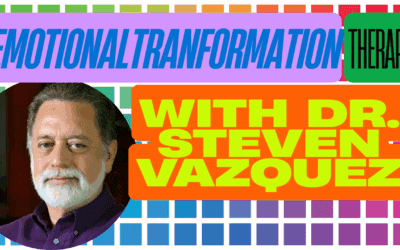




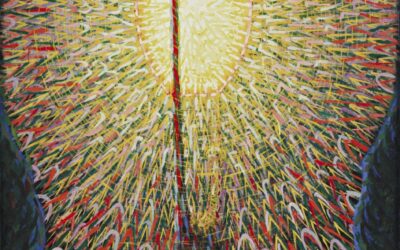

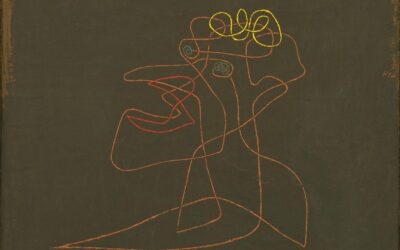
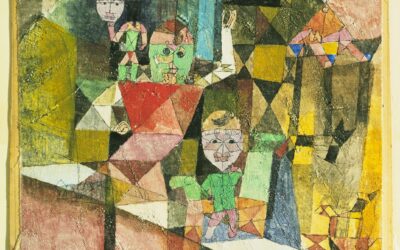

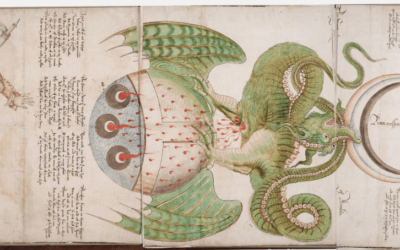
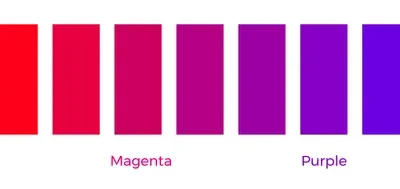

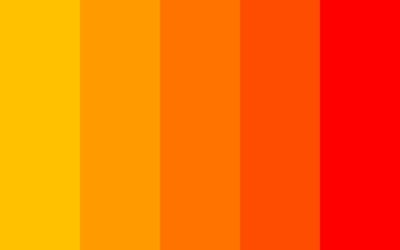
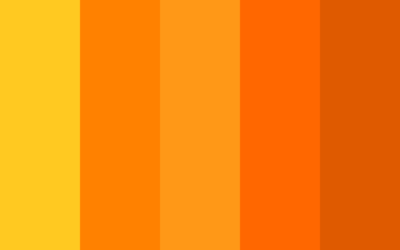
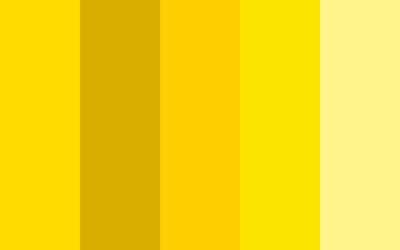



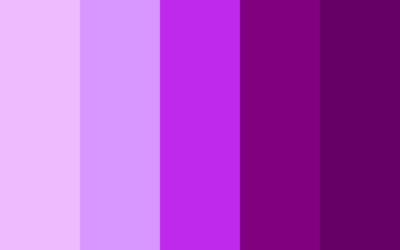
0 Comments